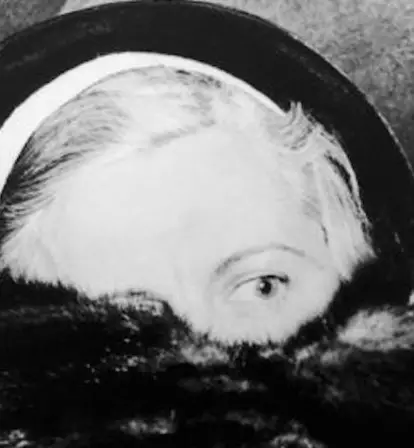Born to Irish-American parents in Brooklyn in 1897, Mae Coughlin's life changed forever when she became the wife of infamous Chicago gangster Al Capone.
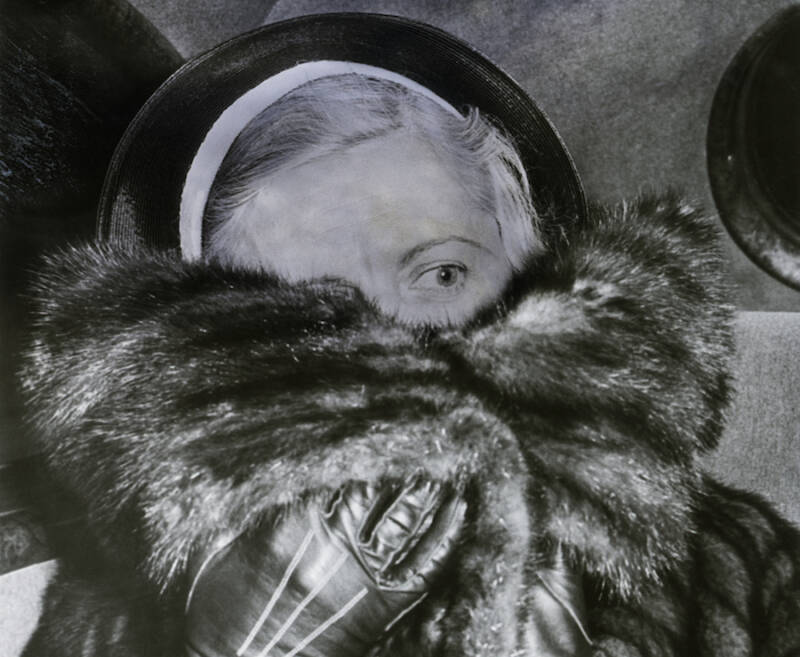
Bettmann/Contributor/Getty ImagesAl Capone’s wife, Mae Capone, tries to avoid photographers while visiting her husband in prison in December 1937.
By all accounts, Mae Coughlin’s early life was much like that of any other hardworking Irish American in the early 1900s. The daughter of two immigrants, she was studious and ambitious as she began to make a life for herself. But her life would change forever when she met Al Capone.
While much has been written about the legendary mobster, Al Capone’s wife Mae Capone has been largely relegated to the sidelines. But it was she who protected him from opportunistic journalists when he became gravely ill due to advanced syphilis in his 40s. It was also she who made sure the mob didn’t worry about the former leader’s deteriorating mental state.
Though Mae Capone was an angelic figure in her husband’s life, she was also complicit in his crimes. While she didn’t wield a gun herself, Mae Capone was well aware of what her husband did for a living.
During Al Capone’s rise from a low-ranking thug to a fearsome mob boss, Mae Capone was always by his side. And she never left, even when his syphilitic brain reduced his mental capacity to that of a 12-year-old.
As Deirdre Bair’s book Al Capone: His Life, Legacy, and Legend put it:
“Mae was a ferocious protector. The Outfit knew he was cloistered and that Mae wouldn’t let him become a problem for them. And Mae knew all about the Outfit. She was one of those wives who made spaghetti for Al and the gang at 3 in the morning when they did business back when he was in charge. She must have heard everything.”
This is the little-known story of Mae Capone, Al Capone’s wife, his protector, and the one woman who surely did hear everything.
Mae Coughlin’s Life Before Meeting Al Capone
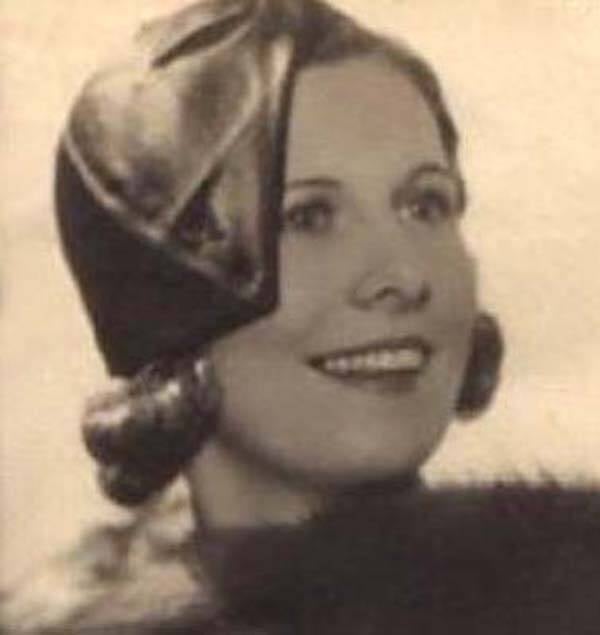
Wikimedia CommonsMae Capone was two years older than her husband, and was considered by some to be “marrying down.”
Mary “Mae” Coughlin was born on April 11, 1897 in Brooklyn, New York. Her parents had emigrated from Ireland earlier that decade and started their family in America.
After Mae Coughlin’s father died of a heart attack, the hardworking student left school at about age 16 to find a job at a box factory.
When she first met Al Capone a few years later, he also worked at a box factory — but he was already getting started on less legitimate side businesses with 1920s mobsters Johnny Torrio and Frankie Yale.
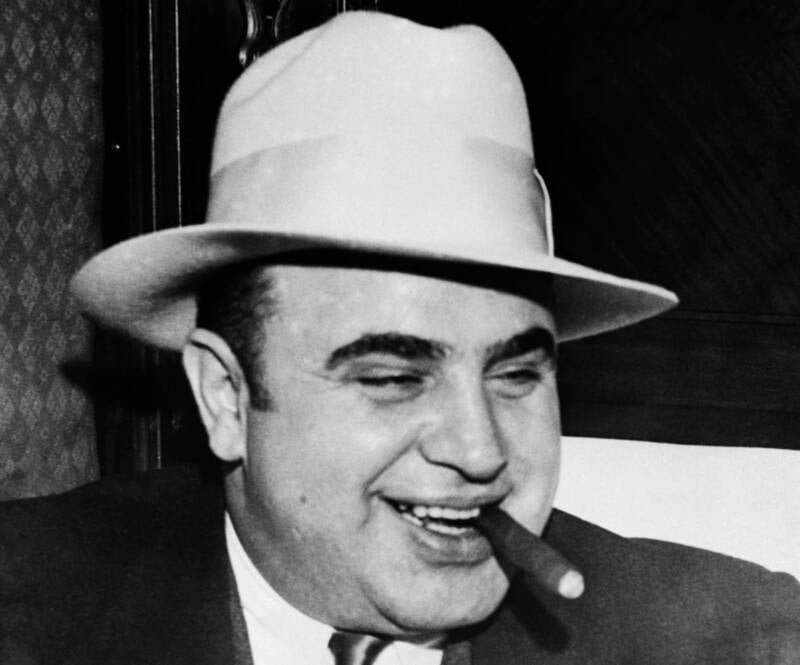
Wikimedia CommonsBy the time Mae Coughlin met Al Capone, he was already mixed up in the world of organized crime in Brooklyn.
Though a prudent Irishwoman from a religious Catholic family bringing home an Italian street punk was odd, their relationship was truly a love story.
Coughlin Falls For Capone And Decides To “Marry Down”
Al Capone was about 18 when he first met Mae Coughlin, who was two years older than him (a fact she would go to great lengths to hide throughout her life).
But despite his youth and mysterious side jobs, he thoroughly charmed his girlfriend’s family. Even when she became pregnant out of wedlock, she was allowed to live openly at home before they got hitched.
It’s unclear exactly how the couple first met, but some think they may have hit it off at a party in Carroll Gardens. Others speculate that Capone’s mother might have arranged their courtship.
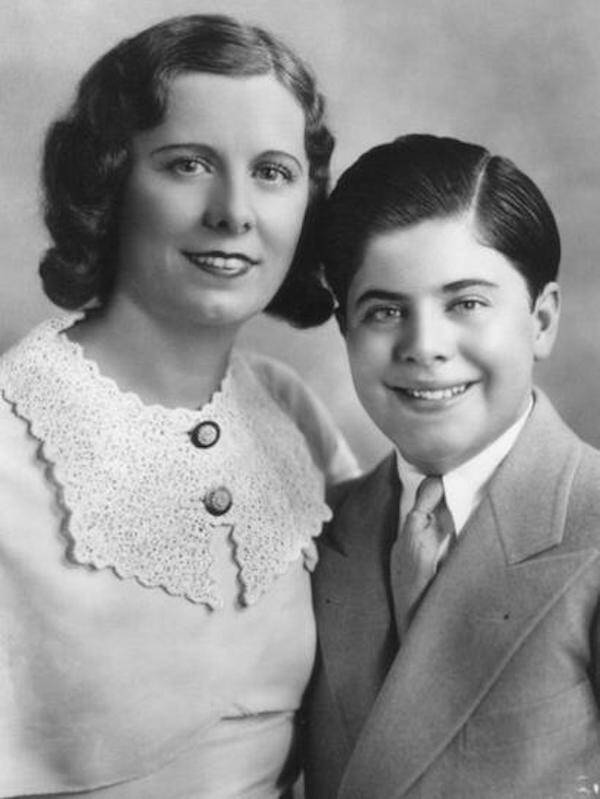
Wikimedia CommonsAl Capone’s son was partially deaf, just like him.
For Capone, marrying an Irish Catholic woman who was more educated than him was a definite step up. Some viewed Coughlin’s decision to wed Capone as “marrying down,” but she found security and trust in him. After all, he made enough money to forward a good chunk of it to his mother.
Though Al Capone bedded countless women, he genuinely fell for Coughlin. Shortly after the birth of their first and only child, the unconventional couple got married at St. Mary Star of the Sea in Brooklyn in 1918.
Mae Capone’s Tumultuous Life As Al Capone’s Wife
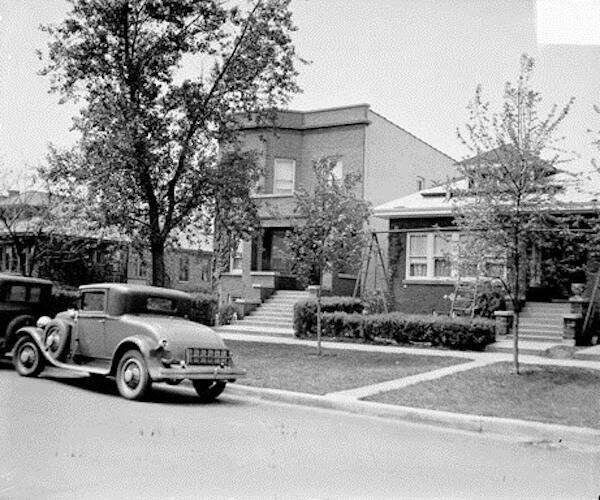
Wikimedia CommonsThe Capone home in Chicago. 1929.
By about 1920, Mae Capone had moved to Chicago with her husband and son, Albert Francis “Sonny” Capone. Like his father before him, Sonny lost some of his hearing early on.
The gangster steadily rose in the ranks in the Windy City, but along the way he also contracted syphilis from a prostitute while working as a bouncer for mob boss James “Big Jim” Colosimo.
It’s still debated whether the couple’s lack of other children besides Sonny was due to Mae Capone contracting the disease from her husband or not.
Capone would later experience severe cognitive decline due to his untreated disease. But before that happened, he built himself an empire in the underworld. After colluding with Torrio to murder Colosimo and take over his business, the newly-promoted thug began his rise as a top mob boss.
Mae Capone was aware of his job, but it was his philandering that hurt her most. “Don’t do as your father did,” she reportedly told Sonny. “He broke my heart.”
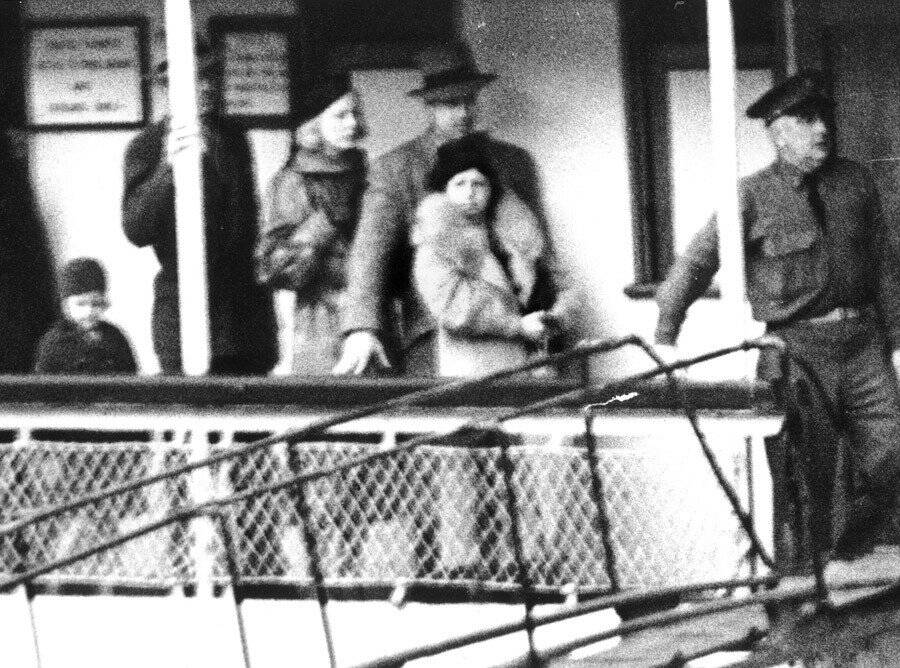
Getty ImagesMae Capone successfully lobbied to get her ill husband out of prison early.
Capone inherited the business in the late 1920s, after Torrio gave him the reins. From then on, it was a roaring rampage of bootlegging, bribing cops, and murdering the competition.
“I’m just a businessman, giving the people what they want,” he’d say, as photos of Capone were splashed across newspapers nationwide. “All I do is satisfy a public demand.”
In the end, however, Capone was ultimately nabbed for tax evasion on Oct. 17, 1931. After Capone’s net worth skyrocketed throughout Prohibition, federal agents led by Eliot Ness eventually discovered that they could put him away for not paying taxes on all that income.
After he was sent away, Mae Capone visited her husband in prison, where his health started to visibly decline.
News of his mysterious health issues made the papers, with an overwhelmed Mae being mobbed by press hounds when she arrived at at the penitentiary.
“Yes, he is going to get well,” she reportedly said. “He is suffering from dejection and a broken spirit, aggravated by intense nervousness.”
Mae Capone: “Feorcious” Protector Of An Ailing Husband
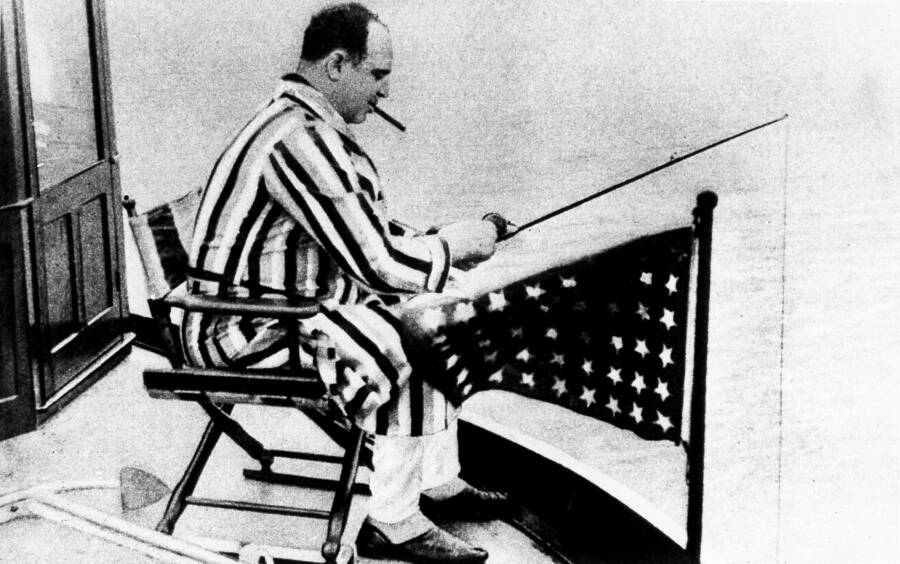
Ullstein Bild/Getty ImagesThe former mob boss was reduced to a mentally deficient child in his final years — with tantrums filling his days.
Al Capone never improved. He had already begun to act strange behind bars, wearing winter clothes in his heated cell. After he was released early in 1939 for good behavior, he spent a short time seeking medical care in Baltimore before his family relocated to Palm Island, Florida.
The mob had moved on and restructured. They were satisfied to have Capone retire, paying him $600 per week — a pittance compared to his previous salary — just to stay quiet.
Before long, Capone began to have delusional chats with long-dead friends. He became Mae Capone’s full-time job, most of which entailed keeping him away from reporters, who were routinely trying to catch a glimpse of him.
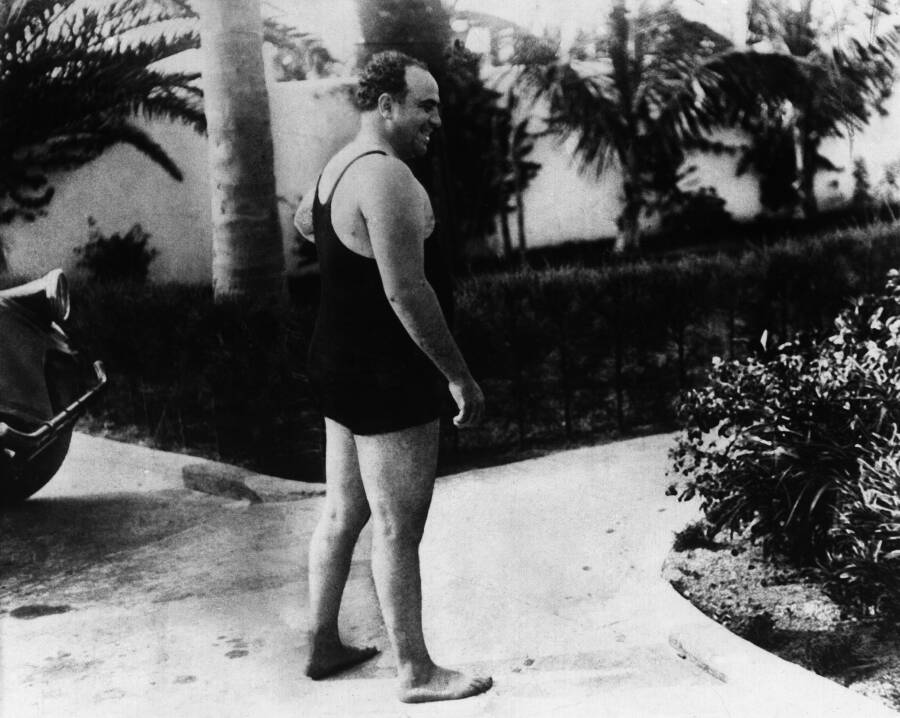
Ullstein Bild/Getty ImagesCapone spent his last years chatting with invisible houseguests and throwing tantrums.
“She knew that it was dangerous for him to go out in public,” wrote author Deirdre Bair.
This was particularly concerning, as anything that painted Capone as a blabbermouth could cause his old friends to silence him for good.
But Mae Capone was “protective of him to the end,” explained Bair.
She also made sure he got the best medical treatment. In fact, Capone was one of the first people to be treated with penicillin in the early 1940s, but by that point it was too late. His organs, including his brain, had begun to rot beyond repair. A sudden stroke in January 1947 allowed pneumonia to take hold in his body as his heart began to fail.
Mae asked her parish priest, Monsignor Barry Williams, to administer her husband’s last rites — knowing what was to come. Ultimately, Al Capone died of cardiac arrest on Jan. 25, 1947 after a series of health complications.
“Mama Mae seemed to need our company,” her granddaughters recalled. “It’s as if the house died when he did. Even though she lived to be eighty-nine… something in her died when he did.”
She never ascended to the second floor of the house again, and chose to sleep in another bedroom. She covered the living room furniture with sheets and refused to serve any meals in the dining room. In the end, Mae Capone died on April 16, 1986, in a nursing home in Hollywood, Florida.
After learning about Al Capone’s wife, Mae Capone, take a look at Al Capone’s prison cell. Then, learn about the short life of Frank Capone.
